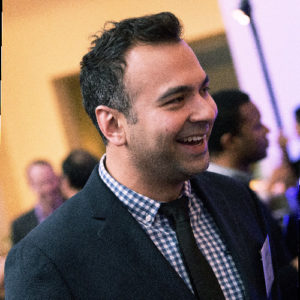Taking on Giants in the Contact Center Space: UJET CEO, Anand Janefalkar (Part 1)

If you haven’t already, please study our Bootstrapping Course and Investor Introductions page.
We’re seeing new SaaS companies emerge that are taking on giant categories. In such businesses, positioning is extremely important. Read how Anand has positioned to get to 40 customers in the contact center software category.
Sramana Mitra: Let’s start at the beginning.
Anand Janefalkar: I was born in a small city in India called Aurangabad. Soon, my parents moved to Mumbai where I went to school and did my undergrad. After that, I was always very curious to do research. I had an excellent opportunity to go to Dallas in SMU where they were starting the electrical engineering program in the new Jerry Junkins building. Jerry Junkins is a key figure in Texas Instruments.
I was very fascinated by cellphones and was always curious about how those worked. So I took that opportunity and flew to Dallas. I loved my time there and loved doing research. I had an opportunity to work with Nokia Research Center. That really shaped my thinking and extended the analytical abilities that I had gained from my formal education.
Sramana Mitra: What year was it that you finished your undergraduate degree?
Anand Janefalkar: I finished in around 2002.
Sramana Mitra: What did you do immediately after?
Anand Janefalkar: I went to Bombay University.
Sramana Mitra: When did you finish your graduate work at SMU? Was it a Master’s or PhD?
Anand Janefalkar: It was a Master’s. I arrived in Dallas on August 6, 2002. I did do some extra research, so I finished around December 2004.
Sramana Mitra: What did you after you came out of SMU?
Anand Janefalkar: Right after that, I interviewed at a bunch of places. Motorola gave me an offer that was pretty amazing. So I moved to a suburb of Chicago called Libertyville where Motorola Mobility was headquartered and started working over there from February.
Sramana Mitra: What happens in your journey from here on? How long were you doing that job? Bring us through that process of what path you followed.
Anand Janefalkar: It was extremely rewarding. I really felt that I really cut my teeth with not only the best technology at Motorola but the engineers and researchers that were there during those times from 2004 to 2011. They were just top notch. Several of them had many patents in wireless technologies. A close co-worker was one of the authors of the USB spec. It was extremely inspiring for me to be around these people.
I think that was led to the thought that I really need to put in effort and make something real about my career and not just have a job. That’s the formation of where I started to distinguish what a job is versus a career and how it can be almost a life purpose. I definitely credit Motorola for a lot of my technical and process maturity.
During that course, I had the opportunity to work on seven smartphones, one table, and one wearable device. I started off with products that were being shipped in Japan, which was amazing. One of the products that I got exposure to was a touchscreen phone in 2004, which was almost unheard of in the US. This was a 3G phone before 3G had arrived in the US.
I definitely got a head start there. I understood how a forward looking, cutting-edge technology can be not only researched but also implemented and deployed. A lot of the unseen groundwork that goes into buildings, networks, and network certifications gave me a real taste of how an enterprise-grade product can be launched and how it should be launched successfully.
After that, Motorola wound down operations in Japan. They started working on the Android products here. So I had an opportunity to be a part of the first and second Android product for Motorola which was the Cliq and Cliq XT for T-Mobile. Fast forward several other products. The first Android tablet and probably the only device based on Android Honeycomb was the Motorola Xoom.
My favorite, which was the last product that I worked on at Motorola, was the Motorola Atrix. This was the first dual-core – a little power DDR2 product based on one of the early Nvidia chipsets that I got an opportunity to work on. It was a four-inch touchscreen phone with a fingerprint sensor in the back. I think that was the first commercial fingerprint sensor phone. Now, touch ID is so prevalent. Back then, we were able to launch this commercial product, which I feel pretty proud of, even though I didn’t see the success that it deserved.
This segment is part 1 in the series : Taking on Giants in the Contact Center Space: UJET CEO, Anand Janefalkar
1 2 3 4 5 6 7
Featured Videos
Can 1M/1M Help Me Raise Money?
How Does 1M/1M Democratize Entrepreneurship Education?
How Does 1M/1M Democratize Management Consulting?
When Is The Right Time To Join 1M/1M?
Can 1M/1M Help Me With Business Development?
Can 1M/1M Help Me With Market Sizing?
Can 1M/1M Help Me Validate My Product?
Will I Have Private 1-on-1 Sessions In 1M/1M?
How Does 1M/1M Help Entrepreneurs Connect With Silicon Valley?
Mentoring or Consulting?
Why Does 1M/1M Charge $1000 a Year?
Why Does 1M/1M Partner With Local Organizations?
Why Don\’t Mentoring Networks Work?
Why Is It Important To Study With 1M/1M Now?
Dan Stewart Story
Vikrant Mathur Story
